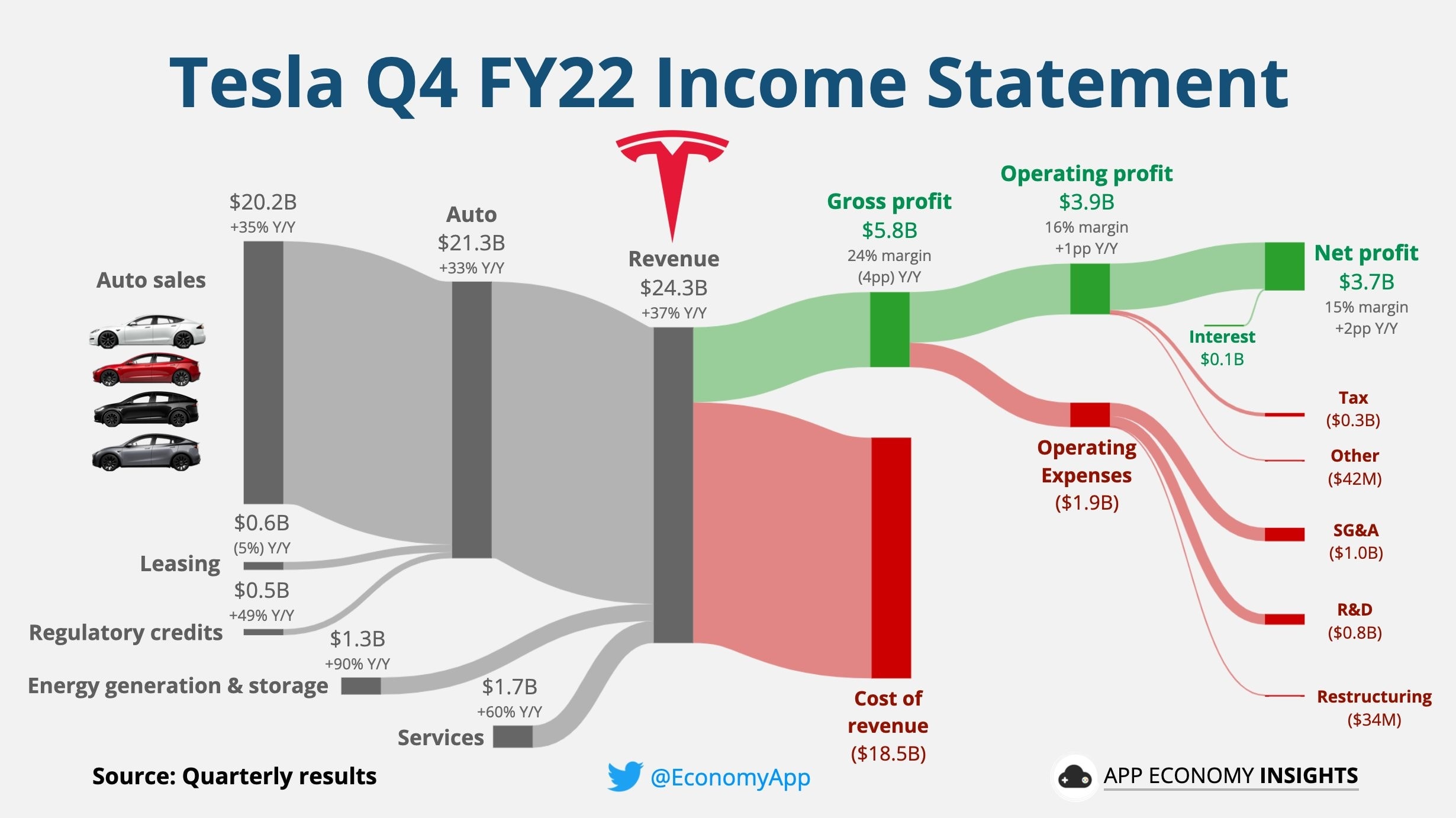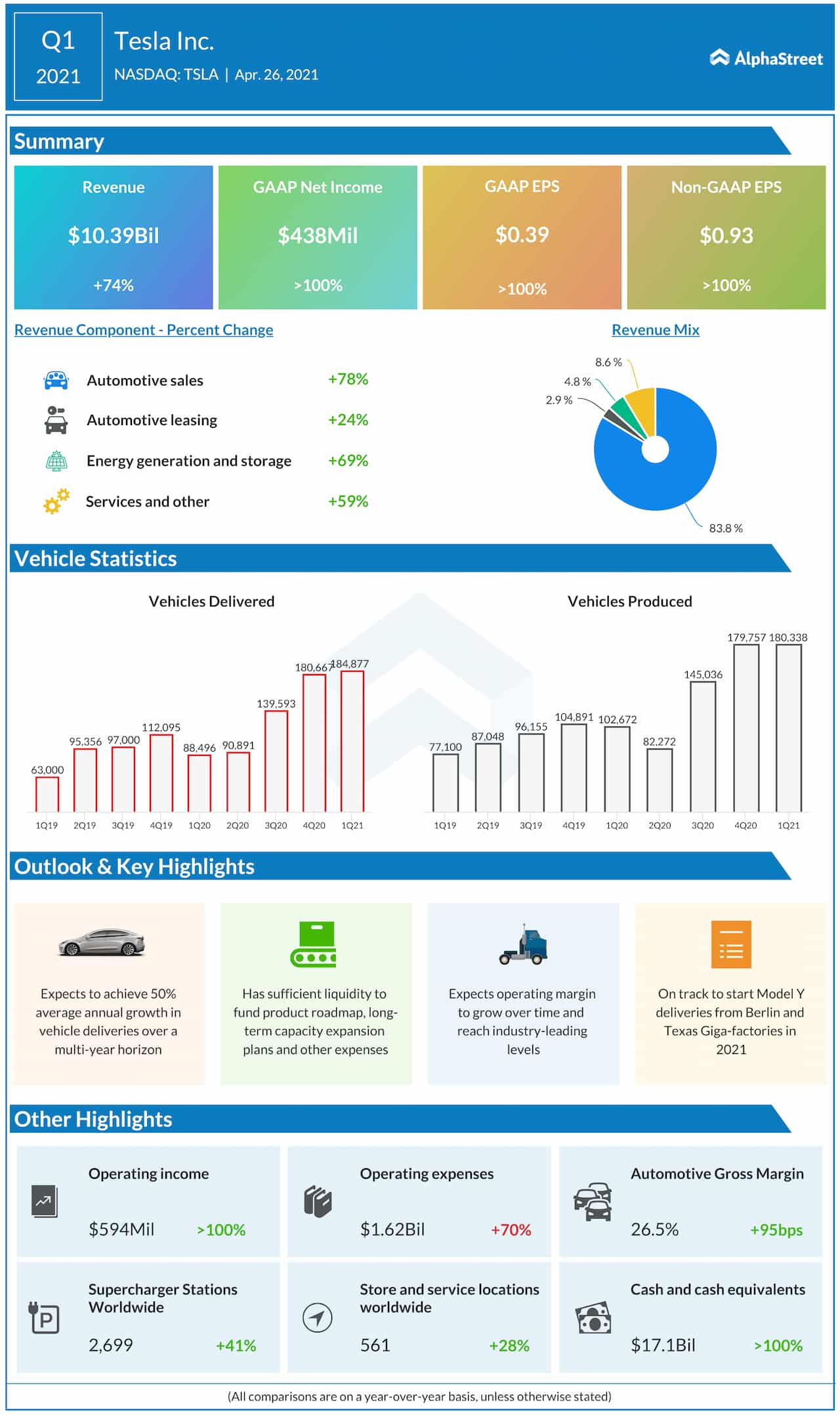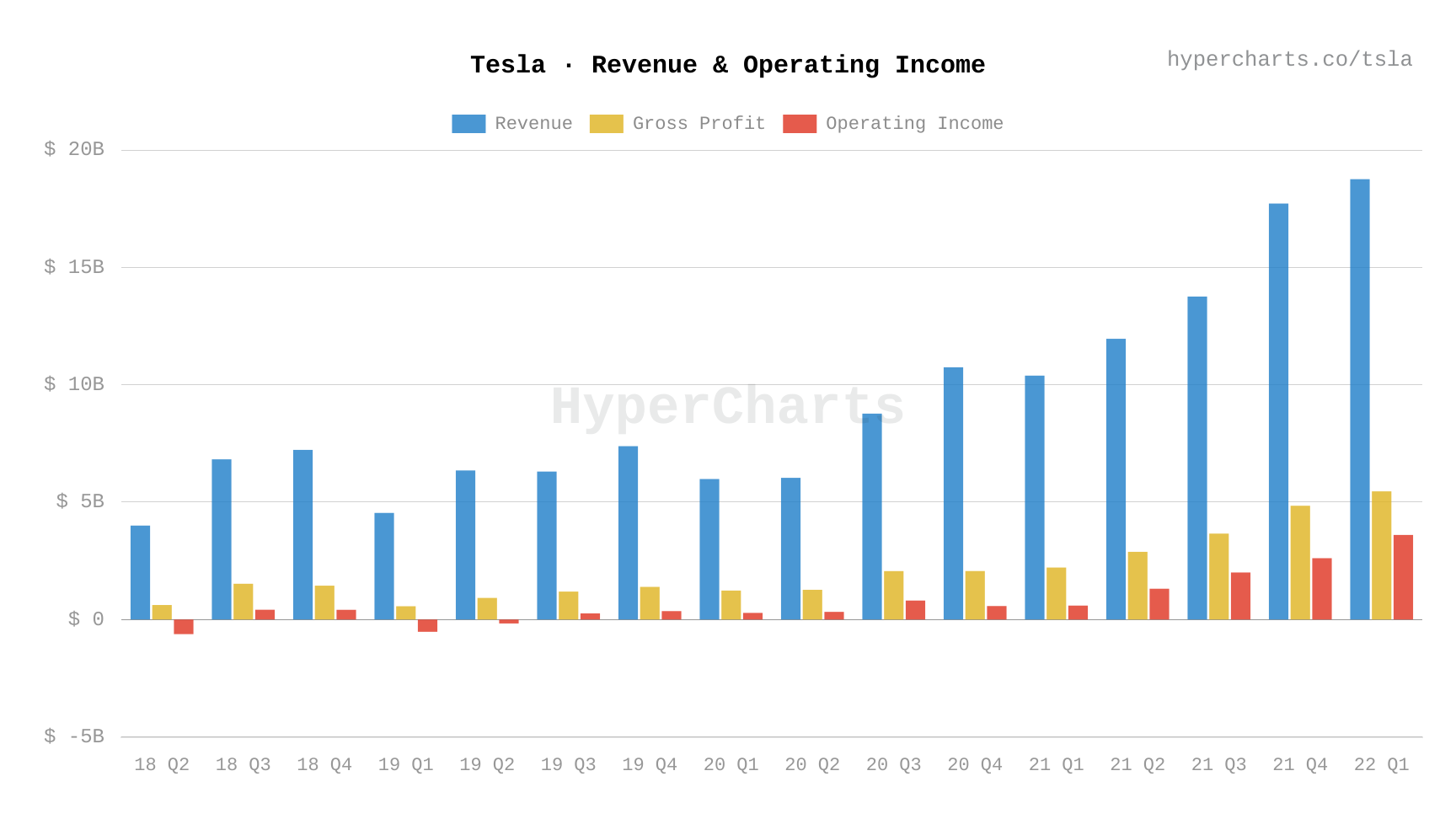Tesla Q1 2025 Earnings Report
Tesla, Inc. released its financial results for the first quarter of 2025 on April 22, 2025. The results showed a significant miss on both earnings per share (EPS) and revenue compared to analysts' expectations. Below is a detailed overview of the key financial metrics and insights from the earnings call.
Key Financial Metrics
-
Earnings Per Share (EPS):
- Reported: $0.27
- Expected: $0.53
- Missed by: $0.26
-
Revenue:
- Reported: $19.34 billion
- Expected: $22.93 billion
- Year-over-Year (YoY) Change: -9%
-
Operating Income:
- Reported: $0.4 billion
- YoY Change: -66%
- Operating Margin: 2.1%
-
Cash Flow:
- Operating Cash Flow: $2.2 billion
- Free Cash Flow: $0.7 billion
- Cash and Investments: $37.0 billion (up by $0.4 billion)
Performance Highlights
-
Sales and Deliveries:
- Tesla experienced a decline in vehicle deliveries, which was attributed to the transition of the Model Y production across all factories. This transition impacted the average selling price (ASP) of vehicles.
- The company reported a significant increase in revenue from regulatory credits, amounting to $595 million. Without these credits, Tesla would have reported a loss for the quarter.
-
Production and Operations:
- The ramp-up of the Model Y production was noted as an industry first, with successful transitions across four factories without major disruptions.
- Tesla's energy division also showed growth, particularly in energy generation and storage, which contributed positively to the overall revenue.
-
Market Conditions:
- The earnings report highlighted increasing uncertainty in the automotive and energy markets due to evolving trade policies and economic conditions, which could impact demand for Tesla's products.
- The company acknowledged the challenges posed by tariffs and their effects on the cost structure.
Future Outlook
- Tesla indicated that the rate of growth for 2025 would depend on various factors, including the acceleration of autonomy efforts and production ramp-ups at their factories.
- The company plans to revisit its 2025 guidance in the upcoming Q2 update, emphasizing the importance of maintaining a strong balance sheet during uncertain times.
Conclusion
Tesla's Q1 2025 earnings report reflects significant challenges, including a decline in vehicle deliveries and revenue, alongside increased operational costs. The company is navigating a complex market environment while continuing to invest in its product roadmap and production capabilities. The outlook remains cautious, with a focus on adapting to market conditions and maintaining financial stability.
For more detailed information, you can refer to the full earnings report and conference call transcript available on Tesla's Investor Relations page and the detailed articles from Electrek and Shacknews.
Related
Analysis of Tesla's Q1 2025 Earnings Report and Future Implications
Tesla's Q1 2025 earnings report, released on April 22, 2025, revealed significant challenges for the company, including missed earnings expectations and declining revenues. This analysis will delve into the key findings from the report and discuss the potential implications for Tesla's future performance.
Key Findings from Q1 2025 Earnings Report
Financial Performance
-
Earnings and Revenue Miss:
- EPS: Reported at $0.27, significantly below the expected $0.53.
- Revenue: Reported at $19.34 billion, missing the consensus estimate of $22.93 billion. This represents a 9% decline year-over-year (YoY).
-
Operating Income:
- Operating income fell to $0.4 billion, a 66% decrease YoY, resulting in a low operating margin of 2.1%. This decline was attributed to reduced vehicle average selling prices (ASP) and increased operating expenses.
-
Cash Flow and Liquidity:
- Operating cash flow was strong at $2.2 billion, with free cash flow of $0.7 billion. The company ended the quarter with $37.0 billion in cash and investments, indicating a solid liquidity position despite the operational challenges.
Operational Highlights
-
Production Challenges: The transition of Model Y production across multiple factories impacted vehicle deliveries, contributing to the revenue decline. The company reported a significant increase in regulatory credit sales, which helped offset losses but raised concerns about reliance on such credits for profitability.
-
Energy Division Growth: Tesla's energy generation and storage segment showed growth, which could be a positive sign for future diversification of revenue streams.
Market Conditions
- Trade Policy Uncertainty: The report highlighted increasing uncertainty in the automotive and energy markets due to evolving trade policies, which could adversely affect demand for Tesla's products. The company acknowledged that tariffs and political sentiment could create challenges in the near term.
Implications for Future Performance
Short-Term Challenges
-
Demand and Pricing Pressure: The decline in vehicle deliveries and ASP suggests that Tesla may face ongoing demand challenges, particularly as competition in the EV market intensifies. The reliance on regulatory credits for profitability raises concerns about sustainable earnings.
-
Operational Adjustments: The transition to new production lines for the Model Y may continue to impact short-term output and efficiency. Tesla's ability to manage these transitions effectively will be crucial in stabilizing production levels.
Long-Term Opportunities
-
Diversification and Innovation: Tesla's growth in the energy sector presents an opportunity to diversify revenue streams beyond automotive sales. Continued investment in AI and autonomous driving technology could enhance Tesla's competitive edge and open new markets.
-
Cost Management: The company is focused on reducing manufacturing costs and improving operational efficiency. Successful implementation of these strategies could enhance margins and profitability in the long run.
-
Market Leadership in EVs: Despite current challenges, Tesla remains a leader in the EV market. The introduction of new models and advancements in technology could help regain market share and drive future growth.
Strategic Focus
-
Revisiting Guidance: Tesla plans to revisit its 2025 guidance in the upcoming Q2 update, which will be critical for investor confidence. Clear communication about strategies to address current challenges and capitalize on growth opportunities will be essential.
-
Investment in Infrastructure: Continued investment in production capacity and supply chain management will be vital for meeting future demand and maintaining Tesla's market position.
Conclusion
Tesla's Q1 2025 earnings report reflects a period of significant challenges, including missed expectations and declining revenues. However, the company's strong liquidity position and growth in its energy division provide a foundation for potential recovery. The implications for future performance will depend on Tesla's ability to navigate short-term operational hurdles while capitalizing on long-term growth opportunities in the EV and energy markets. Investors will be closely watching how Tesla addresses these challenges in the coming quarters.



